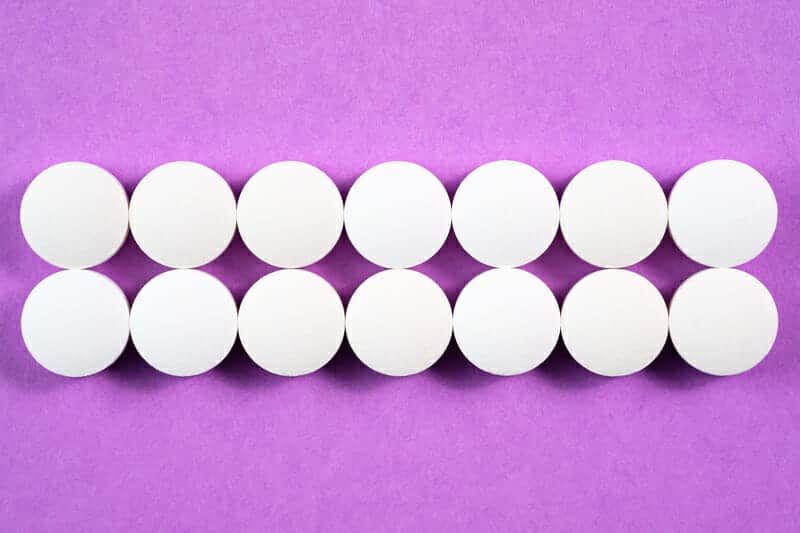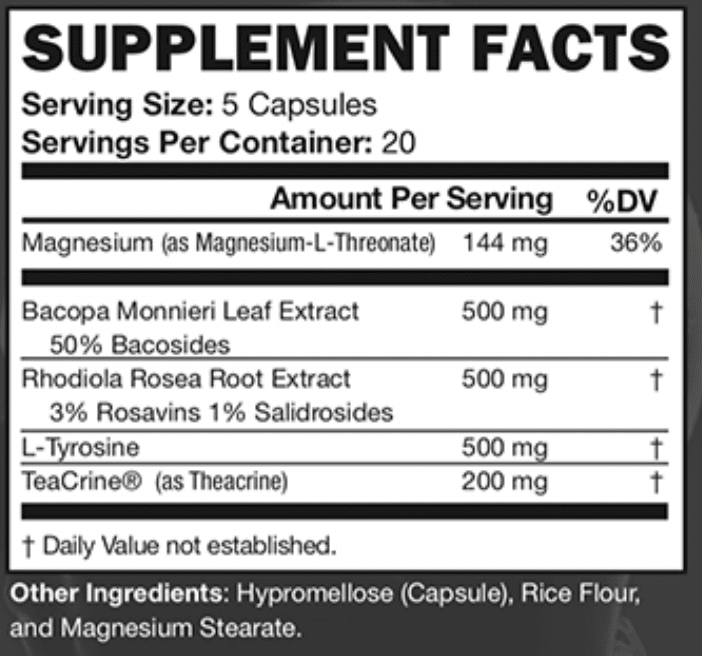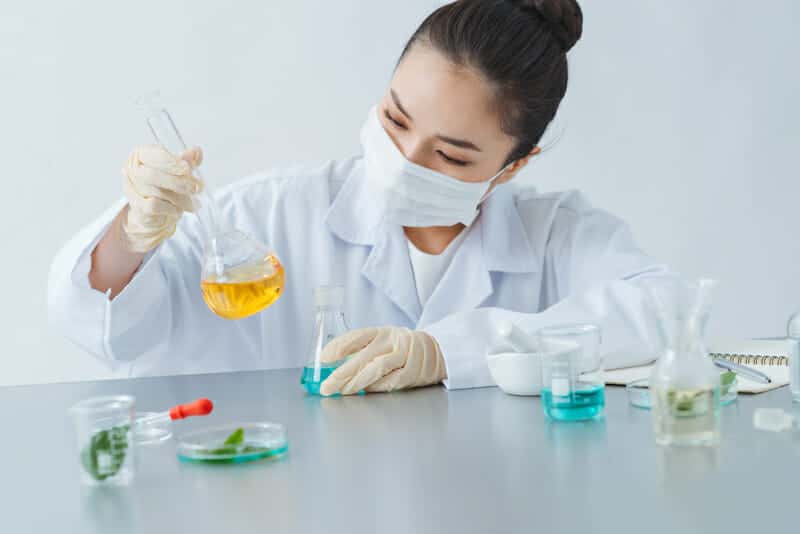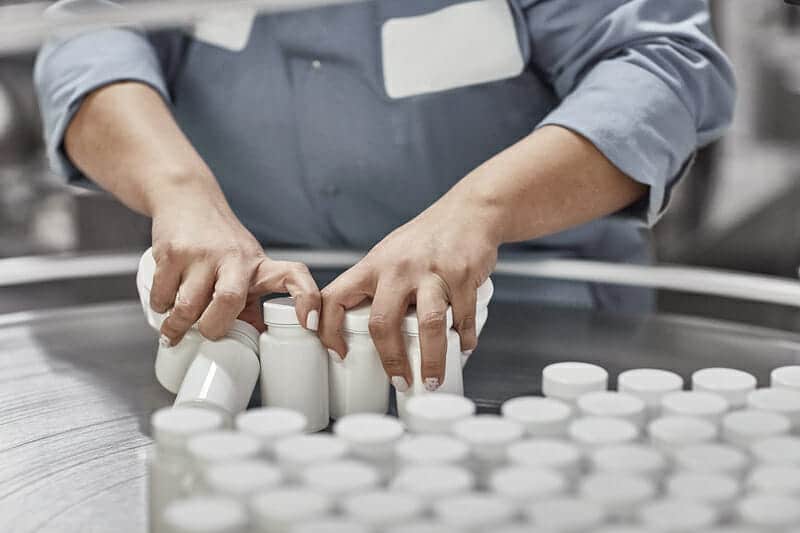Have you ever wondered why I have been extremely hesitant to recommend a peptides vendor in the past, let alone any single product?
There’s a very simple reason: The overwhelming majority of peptide based cosmetic products are ineffective and a waste of your hard-earned money.
This article is going to be much shorter than my other previously published pieces because IT IS important everyone understands what I’m talking about.
So why exactly are most peptide based cosmetic products going to fail in delivering the promised results?
And how do unsuspecting customers get deceived without knowing any better?
Give me just five minutes and you’ll have your answer…
Table of Contents
ToggleWhat Peptide Based Products And Supplements Have in Common

If you have spent as much time in the supplement game as I have, you know about all the dirty tricks.
Here is a very small sample of my credentials in this industry:
- I have spent the last 30 years of my life obsessively using supplements and peptides for every single promised health benefit – fat loss, improved focus, injury repair, immune strengthening, and so much more
- I have formulated my own supplements in the past
- I am well-connected with the top dogs of the supplement industry – people whose names you will never hear about yet are responsible for multiple billions of dollars in sales per year.
But you don’t have to be an insider to know about all the scams.
One of the most popular tricks is the “proprietary blend” illusion:
“…a combination of ingredients used only by one supplement manufacturer.
No other company makes the exact same combination of ingredients, and, in most cases, you don’t know from the label the exact amounts of each ingredient in that blend.”
It doesn’t take a genius to already see why proprietary blends can be extremely misleading:
“… [proprietary formulas] permit manufacturers to withhold important information about what’s really in a product.
The company only has to list the total amount of formula, not the amount of each ingredient in the formula.
The formula’s ingredients only have to be listed in weight order, i.e., based on their relative contribution to the weight of the formula”
And as anyone in the industry will tell you, there are ultimately two reasons why any supplement company would do this:
“(a) to prevent the competition from knowing exactly what ratios and amounts of each ingredient present in the formula to prevent the competition from copying their formula exactly (commonly referred to as a ‘knock off’) or
(b) to hide the fact the formula contains very little of the active ingredients listed on the bottle in an attempt to fool consumers.
…So how does the consumer tell the difference? They can’t, or at least they can’t without some research and knowledge, which the scam artists know few people have the time and energy to dedicate to finding the answers.”
In other words, the voices of the many sheep will drown out the voices of the few discerning minds who can think for themselves.
Reason #1 is nothing more than a psyop to cover their asses in case they get called out (or somebody with a brain inquires into exactly how much of an ingredient is used).
But Reason #2 is what I want to focus on.
Almost 100% of the time, the most effective ingredients within a supplement are the ones that are the most expensive.
By purposely using lower amounts of said ingredients, supplement companies save a significant amount of money on formulation costs and take home more profit.
If they were to use the effective ingredients at their clinically-proven doses, they would have to charge a much higher price point in order to make up for the losses.
Like they say in the pharmaceutical industry, “the dose makes the poison.”
So unless you see a label that looks like the picture below, where all ingredients and their precise doses are fully disclosed, there’s a good chance you’ve been scammed:

Even if we take effectiveness out of the picture, a lot of these ingredients are very expensive to source and manufacture.
So what we have here is a situation where mindless buyers are losing money on formulations that do not have enough of the active ingredient(s) to produce a meaningful result.
And as you’ll soon find out, the peptides industry is guilty of this very same problem.
(FUN FACT: A propriety blend formulation also grants a company the right to drastically change the proportions of ingredients without having to tell you about the changes!)
“Less” Is MORE When It Comes to Peptide Formulations

This insightful comment I found on an online forum for chemists shows yet another problem with peptides products:
“More ingredients do not make products work better. Fewer ingredients are often more effective and certainly easier to formulate with.
When formulating, start with a simple, basic formula that has minimal ingredients each of which has a specific purpose that improves upon a previous formula.
Why use Hyaulronic acid & glycerin? They do the same thing. Why use Jojoba oil & argan oil, & watermelon seed oil & Caprylic/CapricTriglyceride? It’s unlikely you could tell any difference if you just use the Caprylic/CapricTriglyceride by itself.
Formulating is like cooking…fewer ingredients is better.”
(Context: This was in response to somebody who was struggling to make a peptide-based face cream)
On top of adding too many ingredients, it’s also possible to add TOO MUCH of a single ingredient.
A good example of this concept in action is the peptide known as Matrixyl 3000:
“I have seen serum formulations that claim they have a 20 percent concentration, implying that 20 percent of the product that you are buying is the active ingredient Matrixyl 3000.
Firstly, many serums are about 90 percent water and so it could be that what is meant is that there is Matrixyl 3000 at 20 percent of the remaining 10. Keep in mind that Matrixyl 3000 is an expensive ingredient, so if the price looks too good to be true, it probably is.
Secondly, Sederma’s own clinical trials tested Matrixyl at a 4 percent concentration and that is what the results claims are based on. I was once told by someone at Sederma that there is a law of diminishing returns: At above 4 percent, you don’t get any better results.”
Are you starting to see how people can very easily get away with selling you an inferior product at a lower cost?
Or even charging you too much for something that has too many expensive ingredients, or too much of said ingredients?
Forget peptides – these problems plague the WORLDWIDE $4.5 trillion health and wellness economy!
Be VERY Suspicious of How Much Peptides Products Cost

With all of the above being said, I do want to be honest with you…
You should treat the purchase of peptide products as a legitimate investment, and NOT as a money-saving bargain.
In fact, you would probably end up spending thousands of dollars on peptide products (and possibly damaging your health) if you attempt to find cheap deals.
What I’m about to share with you is high-level industry intel – something you would ONLY know if you are directly involved in manufacturing and formulating peptide products.
But first, let me state the obvious and say that synthesizing peptides is one of the most difficult endeavors in the pharmaceutical industry:
“Although actively investigated, strategies for transdermal, oral, inhalation, spray, and intranasal delivery of peptides generally have not been commercially successful.
Some contributory causes for this situation include the fact that peptides: Are high in molecular weight, Have a short half-life in vivo, Are not bioavailable enough, Are too charged.”
Yet as any industry insider knows full and well, the real challenge is lowering the production costs:
“Peptides are too large and too charged to behave like small molecule drugs with predictable pharmacokinetics and pharmacodynamics.
As a result, a peptide that costs $100 per gram to manufacture with bioavailability of 10% has an effective cost of $1,000 per gram.
Cost has long been the most significant impediment in the development of peptide drugs and multiple formulation strategies.“
How Much Should I Expect to Pay For Legitimate Peptide Products?

I’m going to demonstrate how the problem of cost works with a hypothetical yet real-life scenario…
Let’s say we’re creating a peptide formulation that involves a topical cream (i.e. directly applied to the skin).
And for the sake of simplicity, we’re going to refer to this peptide as “XYZ.”
XYZ has been proven in clinical studies to be effective at concentrations of 1% to 5% by mass when applied topically, but we’ll stick with 1% for our example.
In order to create the formulation, we obviously have to buy the peptide from somewhere.
We’re going to have to buy this in bulk, as attempting to purchase an individual gram will have us paying 10x more.
So what we’re going to do is purchase several kilograms of pharmaceutical-grade XYZ from a legitimate wholesale peptides supplier, which will cost us anywhere from $100-300 per GRAM.
We’ll stick with $100 under the assumption that we lucked out and found somebody who can give us a really good deal.
(NOTE: Doing the above requires you to be VERY well connected in the peptides industry, as truly effective peptides will not be found for a “50% off” bargain price at your local Walmart or even on Amazon(as much as Jeff Bezos and friends would convince you otherwise)
After doing our magic with chemical synthesis and product formulation, we decide to sell our XYZ cream at a fair price point that works for the consumer while delivering the promised results of XYZ.
In order to do that, we have to add enough XYZ.
If we want to sell 100-gram bottles of the XYZ formulation, at MINIMUM we will need 1 gram of XYZ in every bottle.
Therefore, charging exactly $100 per bottle puts us at the break-even point (as anything less will be a net loss for the company).
And that’s not even factoring in the other ingredients we have to add for extending XYZ’s shelf life and ensuring optimal delivery of XYZ into the human body.
For the sake of argument, let’s say it cost us a total of $30 to add in all of the other ingredients.
If we want to profit from a bottle that cost us $130 to make, we’ll need to add some kind of markup to ensure every sale of a bottle makes our company a net profit.
After extensive market analysis and crunching the numbers, we make the final decision to charge $150 per bottle (giving us a profit of $20 per bottle sold).
I hope this example was truly revealing as to how much a truly effective peptide formulation should actually cost in the real world.
Keep in mind I haven’t even considered other factors which could make the fictional XYZ peptide even MORE expensive…
- XYZ being bought wholesale in a liquid formulation, which would require us to use MORE in order to get a therapeutically effective concentration once it’s mixed in with the other ingredients
- Degradation of the XYZ peptide, which would reduce its final concentration once you finally use it (if it ends up sitting on the shelves for far too long)
So what can we conclude from everything we now know?
With Peptides, You Don’t Always Get What You Pay For

If you look at 99% of peptide products with a critical eye, using all of the information I’ve given you, you’ll realize that they are functionally useless.
When companies use high-quality and VERY expensive peptides in their products, they are almost always a major loss unless they find a way to “trick” the customer.
Whether it’s through using amounts far lower than the peptide’s clinically effective dose, or through subpar manufacturing processes that lead to peptide degradation, or through adding too many filler ingredients… there are many ways to get around doing things the right way.
The end result is flashy advertising for products that are peptides in name only, all in the pursuit of acquiring as much money as possible.
This never-ending cycle of false promises is part of the reason why it’s so damn hard to stop therapeutic peptides from being suppressed.
And to be clear, my critical stance should not be interpreted as outright hatred of every single peptides company in existence.
There ARE legitimate companies who do the right things, do them the right way, and with the right amounts.
But you’re going to have to have a wise and discerning mind when evaluating peptide based products.
Additionally, if you are committed to tapping into the awesome power of therapeutic peptides, you should purchase only the best formulations out there.
I’ll close off the article by asking you a very simple question:
“If somebody told you they are willing to sell you a brand-new BMW for $15,000, would you actually believe them and make the purchase? Or would you have a long list of hard questions to ask them?”
That’s the same level of skepticism you should have towards peptide products.
As always…
Raise Your Vibration To Optimize Your Love Creation!
Subscribe to my email list so you can get exclusive access to the world’s best health optimization intel before anybody else finds out about it!



